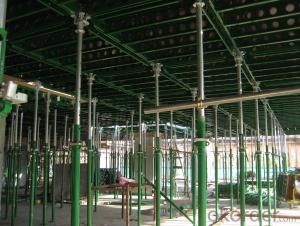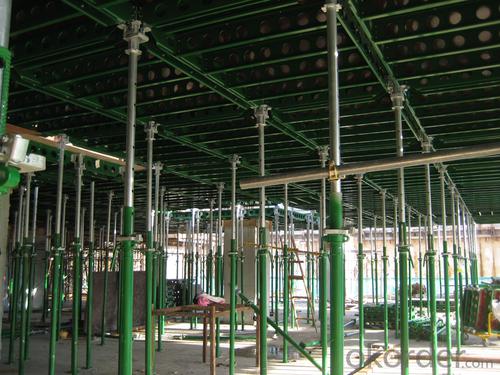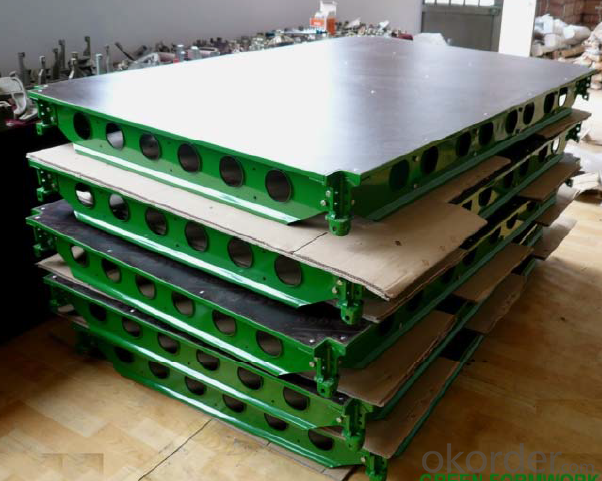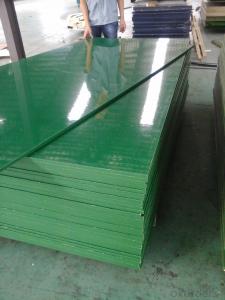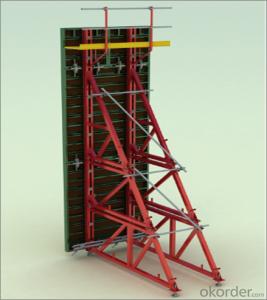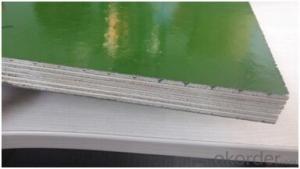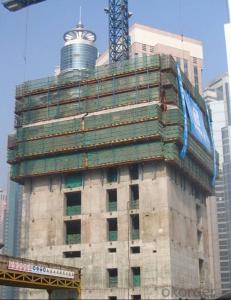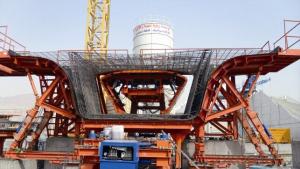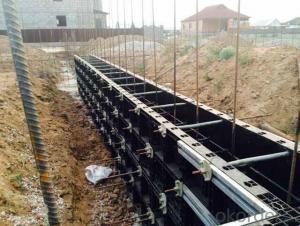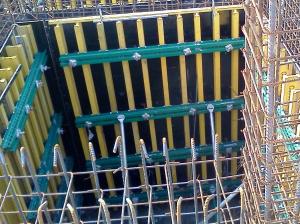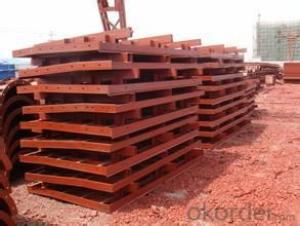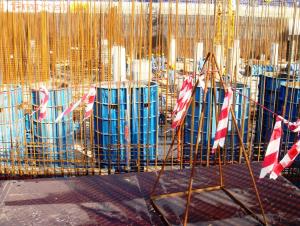Green Formwork-Table Style Early Stripping Formwork System
- Loading Port:
- Qingdao
- Payment Terms:
- TT OR LC
- Min Order Qty:
- 500 m²
- Supply Capability:
- 10000 m²/month
OKorder Service Pledge
OKorder Financial Service
You Might Also Like
The Table Style Early Stripping Formowrk shoring system® is a high octane, high performance engineered modular panel shoring system. The Formwork offers more erection, stripping and financial satisfaction than can ever be expected from conventional shoring systems. It begins with rigid panel construction that enhances handling. The prop with its integrated drop-head puts you in control and helps to ensure confident erection and ease of striking, while back-propping remains undisturbed. These advantages result in a high rate of production. The panel and prop with engineered automatic wind lock provide job safety with a rigid interlocking system that prevents tipping during erection even without bracing.
The system can do slab thickness max.350mm and floor height upto 4m. Enabled with early stripping mechanism, which will be around 100 sqm/per person per day for assembly by skilled workers and takes 48 hours only after concrete casting then remove the panels to the next floor(only props remain), very fast and efficient, a lot of time and labor saved; Also the panels are with strong plywood embedded with 30+ time uses, which is also economical. Time, labor and plywood saved! Table concret formwork, empower your projects!
Panel Size:
| ITEM | NO. | TYPE | SPEC. |
| PANEL | 1 | MB1812 | 1.8X1.2м |
| 2 | MB189 | 1.8X0.9м | |
| 3 | MB186 | 1.8X0.6м | |
| 4 | MB1512 | 1.5X1.2м | |
| 5 | MB159 | 1.5X0.9м | |
| 6 | MB156 | 1.5X0.6м | |
| 7 | MB1212 | 1.2X1.2м | |
| 8 | MB129 | 1.2X0.9м | |
| 9 | MB126 | 1.2X0.6м | |
| 10 | MB99 | 0.9X0.9м | |
| 11 | MB96 | 0.9X0.6м | |
| 12 | MB66 | 0.6X0.6м |
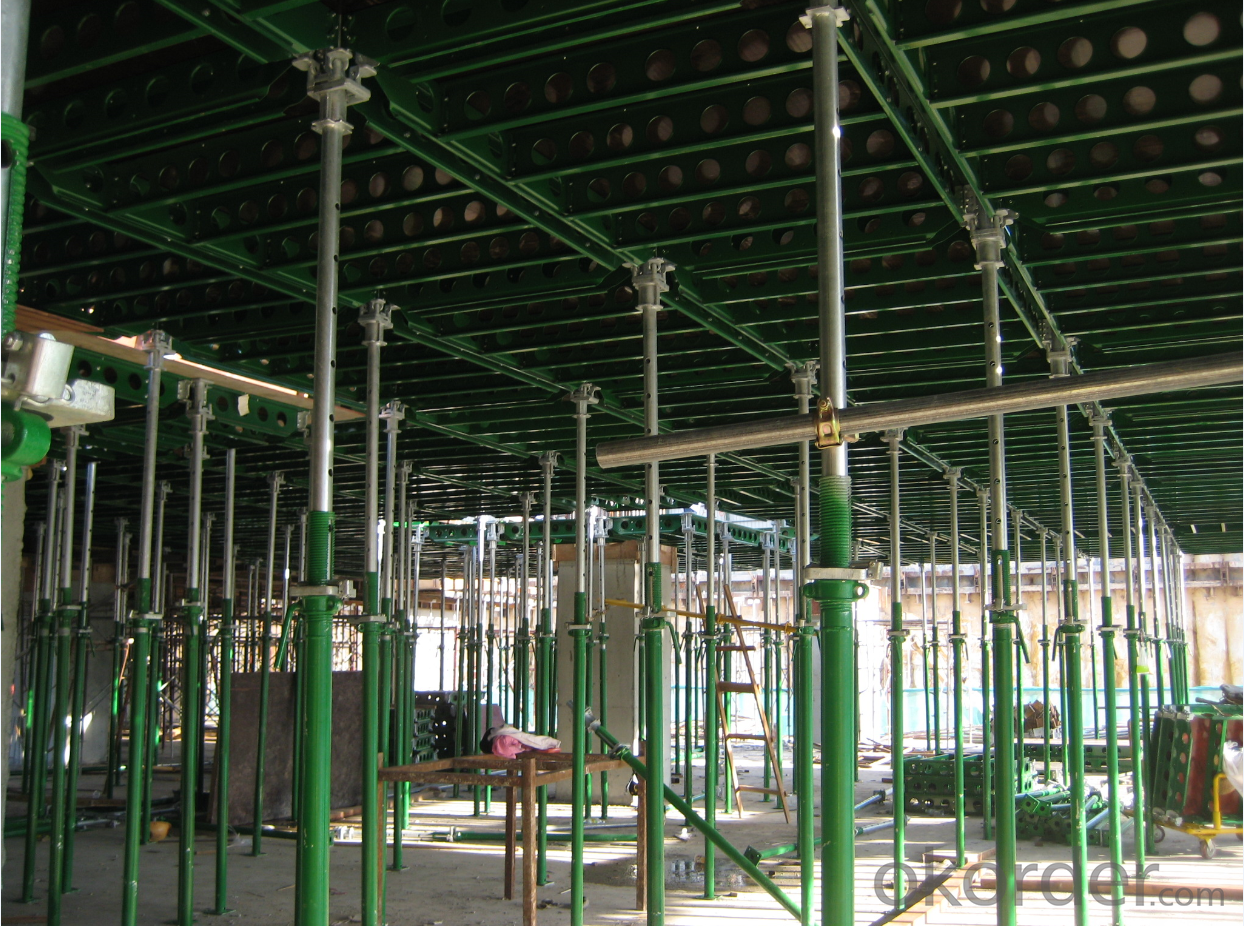

- Q: How does steel frame formwork handle different types of concrete coloring agents?
- Steel frame formwork is a widely used construction technique for casting concrete structures. When it comes to handling different types of concrete coloring agents, steel frame formwork has certain advantages and considerations. Firstly, steel frame formwork provides a strong and stable framework for the concrete, ensuring that the coloring agents are evenly distributed throughout the structure. This helps in achieving a uniform appearance and consistent coloration. Secondly, steel formwork can accommodate various types of concrete coloring agents, including pigments, dyes, and stains. These coloring agents can be added to the concrete mix or applied on the surface after the concrete has been cast. The steel formwork ensures that the coloring agents do not bleed or leach into the surrounding areas, maintaining the desired color scheme. However, it is important to note that steel is a non-absorbent material, which means that it may not bond well with certain coloring agents. For example, acid stains, which typically react with the minerals in concrete to create unique colors, may not work effectively on steel formwork. In such cases, alternative formwork materials like wood or plastic may be more suitable. Additionally, steel formwork may require special surface treatments or coatings to prevent any adverse reactions between the coloring agents and the steel surface. This is particularly important when using corrosive or acidic coloring agents that could potentially damage the steel frame formwork. In conclusion, steel frame formwork can effectively handle different types of concrete coloring agents, providing a durable and stable framework for casting colored concrete structures. However, it is crucial to consider the compatibility of the coloring agents with steel and take necessary precautions to ensure the desired coloration is achieved without compromising the structural integrity of the formwork.
- Q: Are there any specific code or regulatory requirements for using steel frame formwork?
- Yes, there are specific code and regulatory requirements for using steel frame formwork in construction projects. These requirements may vary depending on the country and region, as different jurisdictions have their own building codes and regulations. In general, steel frame formwork systems must comply with structural design standards and codes that ensure the safety and integrity of the structures being built. These codes typically cover aspects such as load-bearing capacities, stability, and durability of the formwork system. For instance, in the United States, the American Concrete Institute (ACI) provides guidelines and standards for formwork design and construction. ACI 347R-14, "Guide to Formwork for Concrete," offers recommendations for steel formwork systems, including criteria for strength, stability, and dimensional tolerances. Similarly, the European Union has its own set of regulations and standards for formwork systems. The European Standard EN 12812:2008, "Falsework - Performance requirements and general design," specifies the requirements for steel formwork, including aspects such as load-bearing capacity, safety factors, and material properties. It is essential for contractors and designers to comply with these code and regulatory requirements when using steel frame formwork in construction projects to ensure the safety of workers and the structural integrity of the final building. Failure to adhere to these requirements may lead to accidents, structural failures, or non-compliance with building regulations, resulting in legal consequences and potential liability. Therefore, it is crucial to consult the relevant building codes and regulations in the specific jurisdiction where the construction is taking place to ensure compliance with the specific requirements for steel frame formwork.
- Q: What are the transportation and logistics considerations for steel frame formwork?
- When dealing with steel frame formwork, it is essential to take into account various transportation and logistics factors. Firstly, the weight and dimensions of the steel frames must be considered. Given that steel is a heavy material, the chosen transportation method must be capable of handling the weight. It is crucial to ensure that the vehicle used for transportation, such as trucks or trailers, can safely carry the steel frames and that they can be loaded and unloaded securely. Another factor to consider is the protection of the steel frames during transportation. Since steel is susceptible to corrosion and damage, appropriate packaging and covering should be employed to shield the frames from exposure to the elements. This may involve using plastic or waterproof covers and ensuring that the frames are tightly secured during transportation to prevent any shifting or movement that could cause harm. Furthermore, the logistics of delivering steel frame formwork to the construction site must be carefully planned. Factors such as the distance between the manufacturing facility and the construction site, as well as the chosen route and transportation infrastructure, should all be taken into account. It is essential to carefully strategize the logistics to ensure prompt delivery and minimize any disruptions to the construction schedule. In addition, a well-organized inventory management system for steel frame formwork is crucial. This includes accurately tracking the quantity, condition, and location of the formwork frames to ensure they are readily available when needed and to prevent any delays or inefficiencies in the construction process. In summary, transportation and logistics considerations for steel frame formwork involve addressing the weight and dimensions of the frames, protecting them during transportation, carefully planning the delivery logistics, and implementing an effective inventory management system. By meticulously considering these factors, construction projects can guarantee the smooth and efficient transportation and utilization of steel frame formwork.
- Q: What is the expected lifespan of steel frame formwork?
- The durability and longevity of steel frame formwork make it a preferred choice for many construction projects, with its expected lifespan varying based on several factors. The quality of the steel used, level of usage, environmental conditions, and regularity of maintenance all influence the lifespan of steel frame formwork. By properly maintaining and caring for steel frame formwork, it can last for several years. High-quality formwork that adheres to industry standards and undergoes regular inspections and maintenance can last anywhere from 10 to 20 years. In some cases, when properly maintained, steel frame formwork can even exceed this lifespan. However, it is crucial to consider that exposure to harsh environmental conditions, such as extreme temperatures or corrosive materials, can significantly reduce the lifespan of steel frame formwork. To extend its lifespan, regular cleaning, rust prevention measures, and timely repairs are necessary. To summarize, the expected lifespan of steel frame formwork can span from 10 to 20 years or more, depending on factors such as quality, usage, maintenance, and environmental conditions.
- Q: Can steel frame formwork be used for both precast and cast-in-place concrete walls?
- Yes, steel frame formwork can be used for both precast and cast-in-place concrete walls. Steel frame formwork is a versatile and durable system that can be easily assembled and disassembled, making it suitable for various construction processes. For precast concrete walls, the steel frame formwork can be used to create the mold or form for the concrete panel, which is then cast and cured off-site before being transported and installed. In the case of cast-in-place concrete walls, the steel frame formwork is used on-site to create the formwork for the concrete wall, which is poured and cured in place. This flexibility of steel frame formwork allows it to be used in both precast and cast-in-place applications, providing efficient and reliable results for different construction needs.
- Q: What are the different finishes that can be achieved with steel frame formwork?
- Different finishes can be achieved with steel frame formwork in construction projects, depending on the type of formwork used and the techniques employed during the pouring and curing of the concrete. 1. A smooth finish can be created on the concrete surface by using high-quality formwork materials, ensuring a tight fit between the formwork panels, and using appropriate release agents to prevent the concrete from sticking. Architects often prefer a smooth finish for its aesthetic appeal and the ease of cleaning or painting the concrete surface. 2. Various textures can be achieved on the concrete surface using steel frame formwork. This can be done by attaching specialized form liners or molds to the formwork panels. These liners or molds can create patterns, imitate natural materials like wood or stone, or add decorative elements to the concrete surface. Textured finishes are commonly used in building facades, interior walls, or for aesthetic purposes. 3. An exposed aggregate finish is possible with steel frame formwork. This finish is achieved by using form liners or molds that create voids or recesses in the concrete. After the concrete cures, the formwork is removed, and the surface is treated to expose the aggregates in the concrete mix. Exposed aggregate finishes are commonly seen in sidewalks, driveways, or decorative concrete elements. 4. Steel frame formwork can be combined with stamping techniques to create a stamped finish on the concrete surface. Specialized stamps or patterns are pressed into the concrete while it is still in a plastic state. These stamps can create various textures, imitate natural materials, or add decorative elements to the concrete surface. Stamped finishes are frequently used for patios, walkways, or outdoor areas. In conclusion, steel frame formwork provides a range of finishes for concrete construction, including smooth, textured, exposed aggregate, and stamped finishes. Each finish offers unique aesthetic and functional characteristics, and the choice depends on the desired outcome, project requirements, and architectural design considerations.
- Q: What are the different types of concrete curing methods used with steel frame formwork?
- There are several different types of concrete curing methods that can be used with steel frame formwork. These methods are applied to ensure the proper hydration and strength development of the concrete, as well as to prevent cracking and other defects. Some of the common concrete curing methods used with steel frame formwork include: 1. Water curing: This is the most traditional and widely used method, where the concrete surface is continuously moistened with water for a certain period of time. Water curing can be done by spraying water directly onto the concrete surface or by covering it with wet burlap or plastic sheets. 2. Membrane curing: This method involves the use of impermeable membranes or curing compounds that are applied to the concrete surface to retain moisture and promote hydration. The membranes can be made of plastic, wax, or other materials and are typically sprayed or brushed onto the surface. 3. Steam curing: In this method, the concrete is exposed to high-pressure steam, which accelerates the hydration process and results in faster strength development. Steam curing is commonly used in precast concrete applications, where time is a critical factor. 4. Chemical curing: Chemical compounds, such as calcium chloride or sodium silicate, can be added to the concrete mix to accelerate the curing process. These compounds react with the cement to promote hydration and can reduce the overall curing time. 5. Insulation curing: This method involves covering the concrete surface with insulating materials, such as blankets or foam boards, to retain heat and moisture. Insulation curing is commonly used in cold weather conditions to prevent freezing and maintain an optimal curing temperature. 6. Carbonation curing: This method utilizes carbon dioxide (CO2) to cure the concrete. CO2 is injected into the concrete mix or applied to the surface, which triggers a chemical reaction and promotes the formation of calcium carbonate. Carbonation curing is an environmentally friendly option as it reduces the carbon footprint associated with traditional cement production. It is important to note that the selection of the appropriate concrete curing method depends on various factors, including the project requirements, weather conditions, and time constraints. Consulting with a structural engineer or concrete specialist is recommended to determine the most suitable curing method for a specific steel frame formwork project.
- Q: What is the role of tie rods and connectors in steel frame formwork?
- The tie rods and connectors in steel frame formwork serve to provide stability and support to the formwork system. They help to distribute the loads evenly across the framework, ensuring the structural integrity of the formwork during the concrete pouring process. Additionally, tie rods and connectors allow for easy adjustment and alignment of the formwork, enabling precise pouring and finishing of the concrete.
- Q: How does steel frame formwork facilitate the construction of walls and columns?
- Steel frame formwork facilitates the construction of walls and columns in several ways. Firstly, steel frame formwork is highly durable and can withstand the pressure exerted by the wet concrete during the construction process. This allows for the creation of strong and sturdy walls and columns that can support the weight and load of the structure. Secondly, steel frame formwork is customizable and can be easily adjusted to different shapes and sizes. This flexibility enables the construction of walls and columns with intricate designs and varying dimensions. The formwork can be easily assembled and disassembled, allowing for efficient and cost-effective construction. Additionally, steel frame formwork provides excellent stability and alignment, ensuring that the walls and columns are built accurately and to the desired specifications. This precision is essential for maintaining structural integrity and achieving a high-quality finish. Moreover, steel frame formwork is reusable, making it a sustainable choice for construction projects. After each use, the formwork can be cleaned, repaired, and stored for future use, reducing the amount of waste generated and minimizing costs. In summary, steel frame formwork is a valuable tool in the construction of walls and columns. Its durability, flexibility, stability, and reusability contribute to the efficient and effective construction process, resulting in strong and well-built structures.
- Q: Can steel frame formwork be used for both monolithic and composite concrete structures?
- Steel frame formwork is suitable for both monolithic and composite concrete structures. This adaptable formwork system can be customized to fit various types of concrete structures. When constructing monolithic structures, the steel frame formwork acts as a temporary mold or framework. It supports the wet concrete until it cures and gains enough strength to support itself. This formwork system is commonly utilized in building walls, columns, and slabs, among other structures. In composite structures, the steel frame formwork is also employed, but with an added layer of reinforcement embedded within the concrete, such as steel bars or mesh. This reinforcement enhances the structure's strength and durability. Composite structures are frequently found in bridges, high-rise buildings, and other heavy-duty applications where increased load-bearing capacity is necessary. Using steel frame formwork offers numerous advantages for both monolithic and composite structures. It provides a sturdy and rigid support system during construction, ensuring precise and accurate concrete placement. Moreover, steel formwork is highly durable and can be reused multiple times, making it a cost-effective choice. Additionally, its modular design facilitates easy assembly and disassembly, saving time and labor on-site. In conclusion, steel frame formwork is a dependable and versatile solution for successful construction projects involving both monolithic and composite concrete structures. It provides the essential support and strength required for the completion of such projects.
Send your message to us
Green Formwork-Table Style Early Stripping Formwork System
- Loading Port:
- Qingdao
- Payment Terms:
- TT OR LC
- Min Order Qty:
- 500 m²
- Supply Capability:
- 10000 m²/month
OKorder Service Pledge
OKorder Financial Service
Similar products
Hot products
Hot Searches
Related keywords
